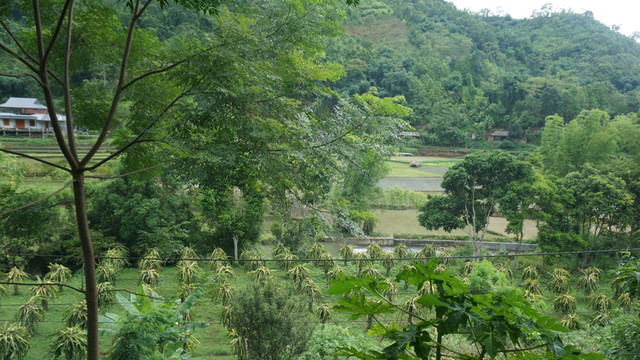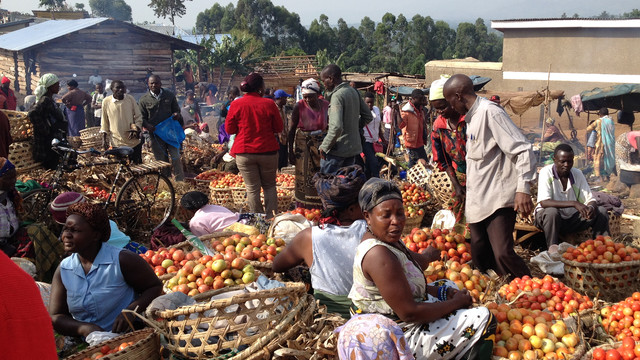Low carbon resilience in the least developed countries: a panacea to address climate change?
Low carbon resilience has become the new buzzword in climate policy. National governments and development partners are increasingly promoting an agenda that tackles reducing carbon emissions while simultaneously building climate resilience in a supposed win-win policy agenda says Susannah Fisher.


The Punakha Dzong, an administrative centre in Bhutan. The Kingdom of Bhutan pledged to remain carbon neutral in 2009. Photo: CAPRA Initiative
Instead of talking about climate change mitigation or climate change adaptation, developed and developing national governments – including Laos, Cambodia, Rwanda, Afghanistan and Nepal – are making plans to simultaneously reduce carbon emissions and build up resilience to the impacts of climate change. Eight of the least developed countries (LDCs) have developed some kind of plan to bring together low carbon development with climate resilience, ranging from the Bangladesh Climate Change Strategy and Action Plan, to the National Strategy and Action Plan for Low Carbon Development in Bhutan, to Ethiopia’s Climate Resilient Green Economy Strategy.
Yet many of these countries have low carbon emissions compared to, say, America, Canada or China. So why are they taking action?
There are several reasons why these least developed countries may be interested in developing low carbon strategies. These include the advantages of leapfrogging straight to new technologies without experiencing the more environmentally-costly interim stages of carbon-intensive industries, that many developed countries have gone through. And, as this approach is increasingly supported by donors and the promise of climate finance, this could provide them with opportunities to access financial support for developing and implementing the plans. This in turn helps them meet their need to increase their access to energy and national energy security through sustainable energy models, such as solar energy or hydropower.
In other cases an LDC government may have an ideological commitment to reducing carbon emissions and hope to encourage developed countries to reduce their emissions through moral pressure. The Kingdom of Bhutan pledged to remain carbon neutral in 2009 with the slogan “The Land of Gross National Happiness to Save our Planet”. The government committed to maintain Bhutan’s status as a net sink for greenhouse gases by ensuring that emissions do not exceed the capacity of its forests to remove them from the atmosphere.
There are a number of key differences between various countries’ plans on low carbon resilience.
Some identify key priorities to be addressed first. Ethiopia, for example, identifies financing hydropower, promoting advance cooking facilities (such as energy-efficient cooking stoves), raising money from reducing emissions from livestock and utilising REDD + (reducing emissions from deforestation and forest degradation) as their four key areas.
Different countries also identify various financing mechanisms and sources for their strategies. Bangladesh has formed an overarching domestic climate change fund that collects donor financing for climate change into one ‘pot’ and allocates it to aspects of the climate change strategy with both low carbon and resilience elements. Most countries hope to pay for their plans, at least partly, through international climate finance and the involvement of the private sector.
The approach to prioritising, financing and implementing national plans can suggest how serious a country is about taking the low carbon resilience approach and mainstreaming it across national planning processes. Some countries make little attempt at this early stage to operationalize their plans, while others have already developed the short, medium and long term strategies to achieve their goals so they can hit the ground running once they have secured financing for implementing it.
Despite this initial enthusiasm, many questions still remain about how the low carbon aspects of this agenda will combine with developing increasing resilience to climate change, both in theory and in practice.
A fundamental question is whether it really is possible to simultaneously address both aspects of climate change policy without serious trade-offs. For example, in some contexts it may be quicker and cheaper to initially provide energy and electricity to rural populations through non-renewable means. This approach however, is not the best way to reduce greenhouse gas emissions, and may not be considered in a low carbon resilient agenda. While the best approach for extending energy access will depend on the country context, the trade-offs between addressing the carbon emissions and securing energy access for vulnerable populations in the short to medium term need to be considered.
This agenda is so new, the answers are still emerging. However, with many countries starting to develop such plans it’s important that the relationship between the two agendas is critically assessed and that tensions between the two areas are explored.
This is not just a technical issue, but one with its own political economy, both national and international. This needs to be better understood to ensure climate resilient planning in the least developed countries supports the most vulnerable communities.



